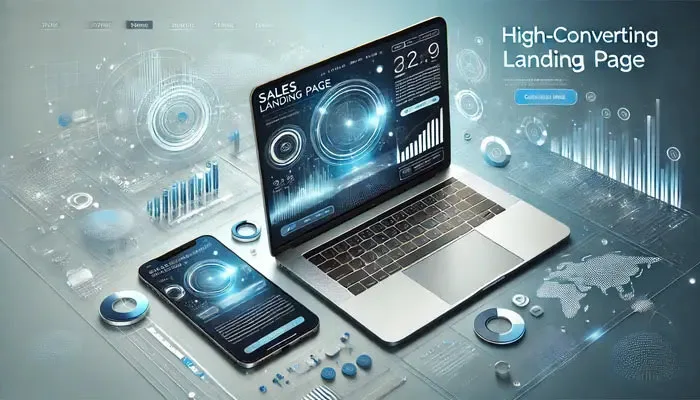
How to Design a Sales Landing Site
Creating an effective sales landing page is crucial for converting visitors into customers. A well-designed landing page enhances user engagement, builds trust, and guides potential clients toward making a purchase. Whether you are promoting a product, service, or the Quigioco app, applying the right design principles will maximise conversions. In this article, we will explore the key elements of a successful landing page and the role of UX/UI, visuals, and analytics in optimising sales performance.
A landing page must be visually appealing, fast-loading, and easy to navigate. Design choices, such as colours, fonts, and structure, significantly impact user behaviour and decision-making. Additionally, adaptability across different devices ensures a seamless experience for all users. By implementing these best practices, web designers can create high-performing sales pages that drive results.
Key Elements of Successful Landing Page Design
The first thing a visitor notices is the headline. It should be concise, compelling, and relevant to the target audience. A strong headline immediately communicates the value proposition, ensuring users understand what the page offers within seconds.
The CTA should be prominently placed and clearly instruct users on the next step, whether it is downloading the Quigioco app, signing up for a newsletter, or purchasing a product. Using action-oriented language like “Get Started” or “Download Now” encourages engagement.
Avoid overwhelming users with excessive text. The content should be direct, highlight benefits, and focus on what the user gains. Bullet points and short paragraphs improve readability and retention.
Including customer testimonials, case studies, and trust badges increases credibility. If a brand is recognised for reliability, showcasing reviews and certifications builds user confidence and encourages conversions.
A clutter-free design keeps users focused on the main objective. Key information should be easily accessible, with white space used strategically to enhance readability and guide attention to essential elements like the CTA.
Colours, Fonts and Graphics: How Visual Style Affects Sales
Colours influence emotions and decision-making. For example, blue conveys trust, while red evokes urgency. Choosing a colour scheme aligned with the brand and audience expectations enhances engagement and conversions.
The right typography improves readability and brand identity. Sans-serif fonts like Open Sans or Roboto are modern and easy to read. Avoid using too many font styles, as consistency enhances user experience.
Images and icons help communicate messages quickly. Using professional visuals relevant to the Quigioco app or the promoted service reinforces credibility and enhances the aesthetic appeal of the landing page.

Adaptability and Loading Speed – Critical Success Factors
With a significant number of users browsing on mobile devices, ensuring a landing page is fully responsive is essential. The design should automatically adjust to different screen sizes for an optimal experience.
Fast-loading pages reduce bounce rates and keep users engaged. Compressing images, minimising HTTP requests, and using a reliable hosting service improve site performance and user experience.
UX/UI Design: How to Make a Website User-Friendly
A sales landing page should have a logical structure with clear menus and links. Users should find information quickly without unnecessary distractions or complicated pathways.
Simplicity improves usability. A clean layout with a clear hierarchy helps users focus on the core message. Every element should serve a purpose and contribute to the overall conversion goal.
Engagement tools like chatbots, hover effects, and dynamic content enhance user interaction. These features make navigation smoother and provide instant assistance, increasing the chances of conversion.
Testing and Analytics: How to Know if Your Website is Working
Testing different versions of a landing page helps identify what works best. Experimenting with CTAs, layouts, and visuals enables designers to make data-driven decisions for better performance.
Analysing heatmaps and user session recordings provides insights into visitor interactions. Understanding where users drop off helps in refining design elements to reduce friction and improve conversions.
Monitoring bounce rates, conversion rates, and average time on page helps measure effectiveness. Regularly updating content and optimising based on analytics ensures the landing page remains relevant and successful.
